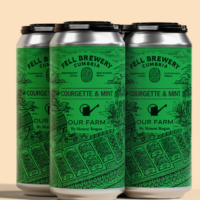Ahead of the Somm360 congress in Montreal last month, Coravin conducted an experiment that proved its wine access system does not adversely affect a wine.

Hosted by chairman and founder of Coravin, Greg Lambrecht, the test involved 30 sommeliers, two different wines, and eight glasses, and was designed to see whether Coravin, which uses a hollow needle to draw wine from a bottle without removing the cork, would damage a wine.
The tasting, which was blind, included a white and a red, and in each case, there were wines that had been accessed by Coravin on June 22, 2015 down to half a bottle, and those from the same case that had not been touched until that day.
The sommeliers were then asked to mark whether they thought the wines had been accessed by Coravin or not, as well as to identify the white and the red.
Lambrecht stressed that this was Coravin’s first “double-blind” tasting, because he normally tells the tasters what they are sampling, but not which wine has been previously accessed.
Due to the four-glass format for each wine, Lambrecht told the attendees that between one and three glasses could have been poured from the accessed bottles, while the random chance to guess the glasses correctly was 1 in 14.
After the tasting was over, Lambrecht asked for a show of hands from the sommeliers to see which glasses they believed were filled with wine that had been accessed 3.5 years ago.
While five correctly identified the white wines that had been previously accessed – glasses two and three – not a single attendee spotted all the reds, which were glasses 1, 2 and 4.
Before this, Lambrecht asked the somms to raise their hands if they thought that any of the glasses were oxidised, or not in a suitable condition for serving, and there were none.
For Lambrecht, this was the “most important result”.
The wines in the tasting were Kuhling Gillot Riesling, Nierstein Pettenthal, Grosse Gewächs 2009 from Rheinhessen and Hirsch Pinot Noir, San Andreas Vineyard, 2012 from Sonoma County. 10 of the attendees correctly identified the white wine as a Riesling from Germany while only one thought that the red was a Pinot Noir from California, with as many as 19 believing it was a Burgundy.
Lambrecht later told db, who took part in the experiment, that Coravin has now done similar tests with over 600 wine professionals from around the world employing 1200 sets of wine, including those previously accessed by Coravin between 3 months and 4 years prior to sampling.
In total, he said that such tests have been done on more than 60 different wines, and that in all cases, there were no oxidised glasses and all glasses have been servable.
He also reported that the correct guess rate was a little less than 1/12 overall.
After the tasting was over, db asked one of the sommeliers who managed to correctly guess the white wines that had previously been accessed by Coravin, and they said the difference was barely perceptible, but concerned the amount of dissolved Carbon Dioxide in the wine, commenting that the CO2 was not evident in the wine that had been accessed by the tool.
On the other hand, the sommelier said that they couldn’t spot the difference between the reds.
The tasting was conducted in Montreal on 24 November, one day before the Somm360 congress started, which was a three-day event designed to help sommeliers obtain various qualifications and improve their standards.
Read more
SOMM360 DESIGNED ‘TO HELP’, SAYS FOUNDER AS CONGRESS FINISHES




